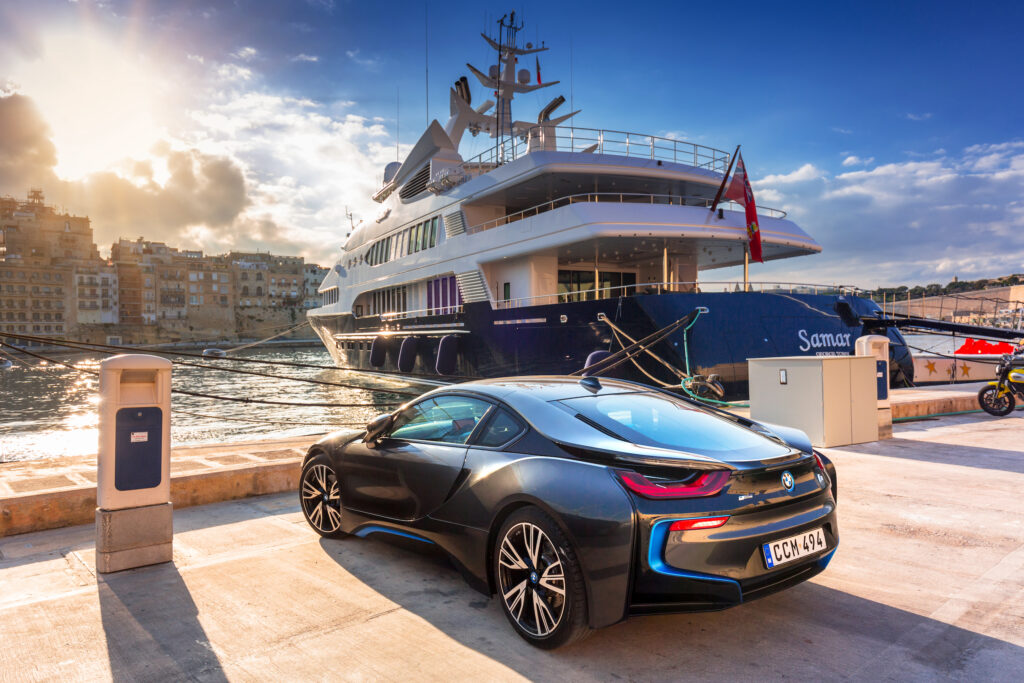There are some extremely luxurious boats, and some remarkable cars, but which of the two depreciates faster?
In this head-to-head, it’s cars that depreciate faster than boats, for several reasons. Firstly, cars tend to be used more than boats, they’re traditionally more accessible and easily obtainable, and they’re not as prolific as boats generally tend to be. Typically, a boat will hold its value much better and for longer than a car.

Read on to learn more about the financial competition between boats and cars, and to find out which comes out on top.
By Land
Both the car and boat industries are intensely competitive, diverse, and subject to the controversies of depreciation. It’s no big secret that commodities depreciate over time, but there are few things out there that crash in value faster than a car does.
For example, it’s assumed that from the moment a brand new car leaves the dealership, its value plummets by around twenty-five percent. This can stretch to as much as a thirty percent decrease within the first year.
It’s believed that by the fifth year on the road, a car will have lost around sixty percent of its initial value, almost regardless of the make or model of car. It doesn’t matter if you’ve purchased a Hyundai or a Lamborghini, the depreciation factor applies all the same.
There are some exceptions to this rule, with certain limited edition models being universally coveted regardless of their age. However, they’re few and far between, and the general rule for stock vehicles applies all the same.
The reasoning behind this rapid depreciation is quite simple: the more a car is used, the faster its value decreases. It’s a fact of life that cars suffer quite remarkably from wear and tear, and over time, they become less reliable.
Also, there are new models released every single year, meaning that the car you bought five years ago will almost certainly be outdated by the time you come to sell it. Furthermore, there’s such a diverse and dense market for cars that they’re simply not hard to obtain, meaning the stock-standard variants won’t ever be worth much later in life.
By Sea
However, boats differ in these factors quite dramatically, especially where the market density is concerned. They’re not mass-produced to the same scale that a motor car is, meaning any particular boat is immediately harder to come by.
In fact, most boats, particularly yachts, are often built to order, meaning every unit is personalized to the owner’s preference. With that information in mind, it stands to reason that the majority of the used boats on the market are somewhat unique.
Conversely, the average used car is certainly not unique, and you can often find hundreds, if not thousands, of identical vehicles for sale.
It’s thought that a brand new boat will lose around fifty percent of its value within the first ten years. That’s around half as fast as a car depreciates, and it isn’t anywhere near as severe where the overall value is concerned.
Ultimately, like a car, the rate of depreciation is decided by how well the boat is looked after. If it’s subject to regular maintenance, properly piloted, and adequately cleaned, then the rate of depreciation may slow somewhat.
It is a sliding scale though, and an inevitable one at that; you simply cannot prevent your commodity from depreciating somewhat. It’s the same the world over, whether you’re looking at technology, fashion, or some other highly-sought commodity.
Although, again, there are exceptions to that rule – commodities or assets that appreciate in value over time. These include finite materials like precious metals or gemstones, oil, or old collectibles like coins, stamps, or pieces of art.
That latter item on the list makes up one of the most diverse and lucrative asset areas. If you’re a collector of fine art, music, or literature, you’ll understand the intense value behind a rare piece, or a limited edition item.
Forget cars and boats – the money is in things that nobody else has, like a single painting, or an unreleased record from decades ago. For example, consider the Salvator Mundi, a Da Vinci painting that was considered lost for hundreds of years.
It was almost accidentally purchased at an auction in Louisiana for ten thousand dollars and subsequently restored to its former glory. After a few years, that same painting sold at auction for almost half a billion dollars.
There’s nothing quite like old art, I’m afraid.
